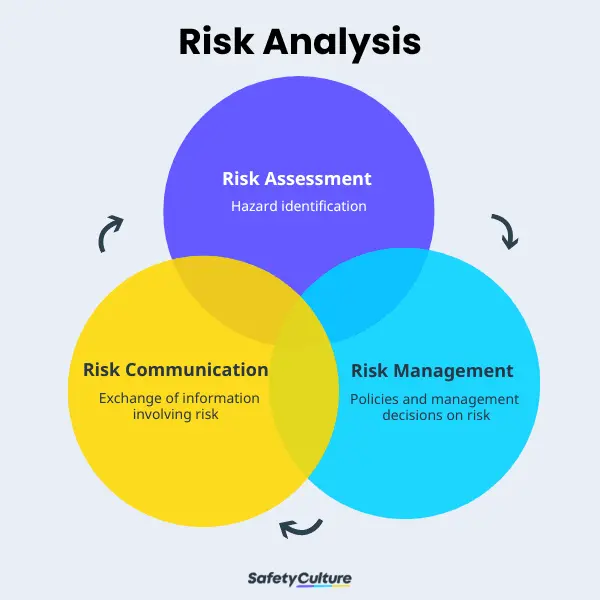Unlocking the Real Importance of Risk Management for Continuous Growth
Unlocking the Real Importance of Risk Management for Continuous Growth
Blog Article
The Critical Relevance of Risk Management in Getting Organizational Goals
In the quickly progressing business landscape, the capability to browse uncertainty has actually become an important. This is where Risk Management steps in, supplying a structured strategy to identifying, examining, and mitigating possible obstructions to advance. It's greater than just a protective procedure - it's a strategic tool, promoting strength and innovation. As we check out the critical function of Risk Management in achieving business objectives, one can't question however aid: how does this equate right into real-world success?
Understanding the Concept of Risk Management in Business

The Indispensable Role of Risk Management in Strategic Preparation
Integrating Risk Management right into strategic planning works as a safeguard for organizations, anchoring their lasting strategies with a solid foundation of readiness and strength. It runs as the organization's radar, detecting prospective hazards and susceptabilities that could interrupt the course in the direction of achieving their stated goals. Risk Management uses a structure for preparing for unpredictabilities and devising suitable reactions, making sure the company's survival and success also when faced with misfortune. By incorporating Risk Management right into critical preparation, companies can change these unpredictabilities right into possibilities for development and technology. This strategic interweaving of Risk Management promotes versatility, making organizations much more robust and enabling them to browse the ever-changing organization landscape with confidence. Consequently, Risk Management becomes a vital device in calculated preparation, important in protecting sustainable success.

Methods for Identifying, Assessing, and Prioritizing Threats
Browsing the complicated landscape of dangers calls for the application of certain techniques for their prioritization, assessment, and recognition. The process starts with Risk recognition, employing devices such as SWOT analysis, which aids in pinpointing possible risks and possibilities. Next, Risk analysis is carried out to establish the possible impact and probability of each Risk. Tools such as Risk matrices and impact-probability charts are made use of for this. Lastly, threats are prioritized based on their possible influence and possibility, permitting companies to focus their resources on critical threats. This organized approach guarantees a thorough understanding of the Risk landscape, enabling companies to make enlightened choices and effectively handle threats to achieve their goals - importance of risk management.
Guarding Organizational Operations Through Effective Risk Management
In business landscape filled with uncertainties, effective Risk Management plays a critical role in protecting organizational operations. It works as a safety guard, minimizing the adverse results of possible threats and guaranteeing webpage the smooth functioning of all procedures. By identifying and examining possible hazards, Risk Management allows organizations to establish durable contingency strategies. This preventative technique aids in maintaining functional stability, also when faced with unexpected circumstances. Fundamentally, Risk Management is the lifeline that keeps the business operations afloat amidst unstable waters. It makes sure not only the survival yet the lasting growth of an organization, making it an important tool in attaining service objectives. Companies have to spend in detailed Risk Management strategies to safeguard their operations.

Transforming Prospective Threats to Opportunities: The Power of Risk Management
While prospective risks could initially look like roadblocks to organizational success, efficient Risk Management can change them into chances. A proactive approach to take the chance of Management includes recognizing, assessing, and prioritizing dangers to design strategies that turn them into prospective advantages. This procedure necessitates the development of a risk-aware society within the company, encouraging individuals to check out threats as prospective stimulants for change and growth, rather than plain risks. importance of risk management. Via this lens, potential dangers become possibilities to introduce, improve procedures, and strengthen resilience. Thus, by leveraging the power of Risk Management, organizations can not just safeguard their procedures yet additionally stimulate development and attain their objectives in an uncertain organization environment.
Case Studies: Success Stories of Risk Management Driving Company Objectives
Effective implementation of Risk Management strategies has generated outstanding outcomes in various organizations, underscoring the merits of this technique. Multinational business like Microsoft and Google, for circumstances, have leveraged Risk Management to minimize dangers and manipulate chances, driving their organization objectives ahead. These instances illustrate exactly how effective Risk Management can not just guide businesses clear of prospective challenges but additionally guide them in the direction of their critical objectives.
Verdict
Finally, Risk Management is fundamentally vital in attaining business goals. It offers an organized approach to identifying, analyzing, and resolving prospective hazards and opportunities. Greater than just mitigating dangers, it likewise promotes innovation, resilience, and sustainable growth. By integrating Risk Management right into strategic planning, services can much better navigate unpredictabilities, protect procedures, and capitalise on opportunities, view publisher site therefore straightening with lasting purposes.
At its core, Risk Management is the procedure of identifying, examining, and resolving potential dangers that can negatively impact a company's operations or purposes. Next, Risk evaluation is conducted to ascertain the possible effect and possibility of each Risk. Threats are prioritized based on their possible effect and possibility, allowing organizations to concentrate their sources on critical dangers. By determining and examining prospective risks, Risk Management enables companies to develop durable contingency plans. A positive technique to read the article take the chance of Management includes determining, analyzing, and focusing on threats to create methods that transform them right into potential advantages.
Report this page